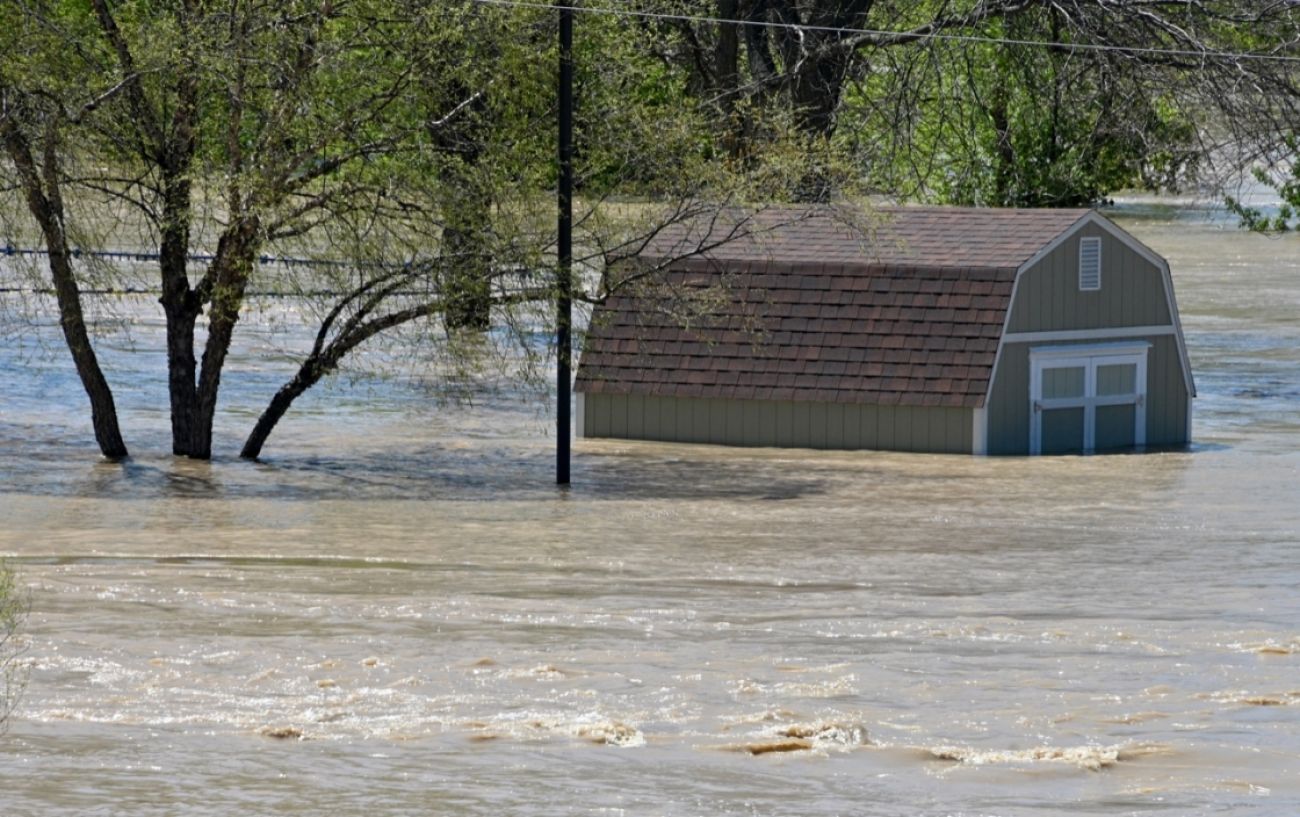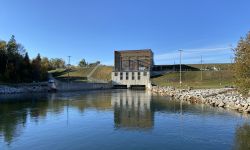Report: Shoddy construction, ignored threats led to Edenville Dam collapse

An independent investigation into last year’s Edenville Dam failure provides new details into how known deficiencies at the dam likely contributed to its collapse. It also raises warnings for safety officials looking to prevent failures at other old, earthen dams.
As water poured into the Wixom Lake reservoir following an intense rainstorm in May 2020, the reservoir filled to a record high, waterlogging the dam’s loose-sand embankment and causing it to liquify under the pressure of the water backed up behind it.
That’s the basic explanation investigators provided Monday in a preliminary report on how the Edenville Dam failed — and one made visible by a bystander’s dramatic video of the May 19 failure.
Related stories:
- Should taxpayers foot the bill for restoring the Midland dams?
- Feds fine former Midland dams owner $15 million over safety violations
- Michigan communities turn to wetlands to prevent damage during floods
- Michigan dams need ‘immediate attention’ to prevent next failure
It’s a “rare, but not unprecedented” phenomenon, investigators wrote in their 42-page report — one that dam safety experts until now had seen as a threat that only emerges during earthquakes.
“We had not, as a profession, up until this point recognized that (earthen dams like Edenville) could perhaps fail in the way that this one failed,” investigative team leader John France, president of JWF Consulting, said in a phone call with reporters Monday. “So it's going to lead to some changes in the way the engineering profession looks at it.”
The investigation team’s report provides a series of clues into how shoddy construction, ignored warnings and intense rainfall likely combined to create the circumstances for a rare kind of failure.
Among them:
At least part of the embankment that dammed the Tobacco and Tittabawassee rivers to form Wixom Lake northwest of Midland appeared to be made of loose sand, indicating that shoddy construction when the dam was built in 1925 may have set it up for failure nearly a century later.
Dam construction plans called for crews to compact the sand, which would have made it less vulnerable to the type of liquefaction failure that occurred last year. But photographs of dam construction show no evidence that ever happened, France said.
“As best we can judge,” he said, “the embankment wasn’t constructed according to what that specification was.”
France called that lack of soil compaction “the primary factor” leading to the dam’s failure. But it probably wasn’t the only one.
Officials with Boyce Hydro — the company that bought the Edenville dam and three other mid-Michigan dams as a tax shelter in 2006 and still owned them when last year’s rainstorm hit — had known since at least 2012 that the section that later failed lacked the tile drains that lined the bottom of the rest of the dam.
Tile drains help whisk away water that seeps into the embankment. Without them, the section that later failed was more vulnerable to saturated soils. It’s unclear whether the drains were never installed or had simply been buried, investigators said, but their absence probably contributed to the failure.
A 2012 report commissioned by Boyce revealed the missing drains, France told Bridge Michigan in an email. As for whether someone should have stepped in to remedy the issue? France said investigators plan to address that question in a final report that’s expected months from now.
Reached by Bridge Michigan on Monday, a lawyer for Boyce trustee Lee Mueller defended the former dam owner’s inaction regarding the missing drains, arguing regulators at the Federal Energy Regulatory Commission never ordered the company to fix the problem.
And even if they had, lawyer Lawrence Kogan said, “Boyce could not afford to pay for the types of repairs that otherwise would have been necessary for a dam that age.”
Officials at the Federal Energy Regulatory Agency, which oversaw the Edenville Dam until the agency revoked the dam’s hydropower license and handed oversight to the state of Michigan in 2018, didn’t respond to questions from Bridge but said FERC officials are reviewing the investigative report.
The reservoir’s water level on May 19, the day of the failure, rose three feet higher than the previous record, likely contributing to the failure. The water never rose over the dam, investigators concluded, but it saturated and pressed against the sandy embankment, leading to a phenomenon known as “static liquefaction.”
Without that record-high water level, “we do not believe that Edenville Dam would have failed,” France said in an email to Bridge.
But France also said the lake would not have reached that record-high if it had been preemptively drained to make way for the coming rainwater — something that wasn’t allowed under the dam’s operating rules.
Kogan, Mueller’s lawyer, said the findings back up his client’s argument that area landowners and state regulators share blame for the failure because they pushed back when Boyce lowered water levels in the reservoir in the years and months before the dam collapse.
As Boyce sparred with lakefront landowners over who should pay for repairs to bring the decrepit dam into compliance with flood control standards, Mueller often argued that drawdowns were necessary to ensure safety.
Following years of conflict over the fluctuating water levels, area residents led by a group called the Four Lakes Task Force, obtained a court-ordered “legal lake level” that essentially forbade Boyce from draining Wixom Lake.
Three weeks before the failure, Michigan Attorney General Dana Nessel sued Boyce for lowering the water levels, alleging the company illegally lowered Wixom Lake in 2018 and 2019, killing mussels that live in the reservoir.
Were it not for those actions by residents and the state, Kogan argued, Boyce would have kept the lake levels low. State lawyers have disputed that claim.
David Kepler, president of the Four Lakes Task Force, could not be reached for comment Monday.
In a statement Monday, a spokesperson for the Michigan Department of Environment, Great Lakes and Energy said the agency “is reviewing the findings and is eager to use lessons from it to continue to strengthen Michigan’s dam safety program.”
Spokesperson Hugh McDiarmid declined to comment on specifics from the report.
The Sanford Dam failure was predictable.
As for what caused the downstream Sanford Dam to fail? That’s simple, according to the report: Water gushed downstream from the collapsed Edenville dam, filling Sanford Lake faster than the Sanford Dam’s spillways could drain it downstream. The reservoir overflowed, and water eroded the dam’s embankment as it spilled over.
This second catastrophe, investigators said, “was not unexpected.”
“Regulators and engineers understood that should a breach occur at Edenville, Sanford would almost certainly be overtopped and fail,” they wrote.
While the report sheds new light on the physical causes of last year’s dam breaks, it doesn’t assign blame. A second report expected in several months will detail those so-called “human causes” of the disaster.
Lawsuits from victims of the dam failures target Boyce as well as state and federal regulators. But if they prevail in court, plaintiffs are unlikely to recover much money from Boyce because the company has filed for bankruptcy.
France said Monday that investigators won’t identify one clear culprit in its follow-up report. Instead, he said, blame likely rests with “a combination of parties involved.”
To Cathy Allen, whose home on Sanford Lake was severely damaged in the flood, the culprits are already clear: “Everyone that had any kind of oversight on these dams,” from Boyce to state and federal regulators.
“This is just verifying that they’ve known there have been problems with the dam all along,” said Allen, who together with her husband, Dan, is suing federal regulators over the dam failure. “...They just passed the buck to someone else and didn't do their jobs.”
While the Allens await their day in court, they are settling into their newly-rebuilt home on Sanford Lake. They’re happy to be back home, Dan Allen said, but are now “living week to week, month to month” as they use their retirement benefits to pay two mortgages: One for their destroyed home, and another for extensive flood repairs.
Michigan Environment Watch
Michigan Environment Watch examines how public policy, industry, and other factors interact with the state’s trove of natural resources.
- See full coverage
- Subscribe
- Share tips and questions with Bridge environment reporter Kelly House
Michigan Environment Watch is made possible by generous financial support from:
Our generous Environment Watch underwriters encourage Bridge Michigan readers to also support civic journalism by becoming Bridge members. Please consider joining today.
See what new members are saying about why they donated to Bridge Michigan:
- “In order for this information to be accurate and unbiased it must be underwritten by its readers, not by special interests.” - Larry S.
- “Not many other media sources report on the topics Bridge does.” - Susan B.
- “Your journalism is outstanding and rare these days.” - Mark S.
If you want to ensure the future of nonpartisan, nonprofit Michigan journalism, please become a member today. You, too, will be asked why you donated and maybe we'll feature your quote next time!






